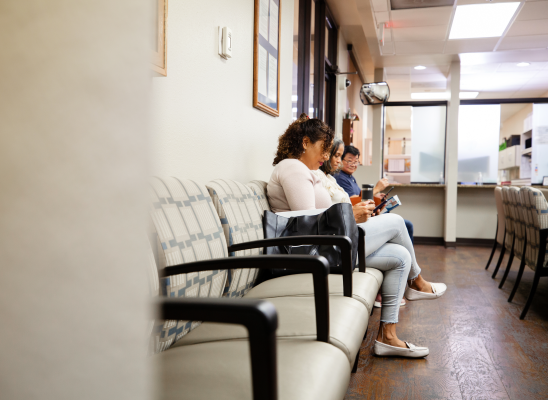Understanding Nighttime Skin Picking: Why It Happens and How to Find Relief

Online test
Find out the severity of your symptoms with this free online test
Waking up to fresh wounds or blood under your fingernails can be distressing and confusing. How does that happen? You were just sleeping. For many people with excoriation disorder, commonly known as skin picking disorder, nighttime picking is an unexpected and unique challenge that differs from conscious, daytime picking behaviors.
The Reality of Sleep-Related Skin Picking
While you might not hear much about it, research reveals that nighttime skin picking is rather common in people with skin picking disorder. In a comprehensive study examining sleep patterns in individuals with body-focused repetitive behaviors (BFRBs), researchers found that approximately 27% of people with excoriation disorder reported picking their skin during sleep at least once in the past month. Interestingly, this behavior rarely occurs in isolation. None of the participants in the study reported picking exclusively during sleep, suggesting that sleep-related picking typically exists alongside daytime behaviors.
Why Nighttime Skin Picking Happens
Just why nighttime skin picking happens isn’t entirely clear. Research has identified several contributing factors that may help explain why this skin picking behavior persists even when you drift off to sleep.
Sleep Disturbance and Quality
People with excoriation disorder experience significantly greater sleep disturbance compared to those without the condition. Studies show that individuals who pick during sleep report notably poorer overall sleep quality, longer time needed to fall asleep, and increased sleep disturbances throughout the night. This creates a troubling cycle where poor sleep may contribute to picking behavior, which in turn further disrupts sleep quality.
The Anxiety Connection
There appears to be a link between nighttime skin picking and heightened anxiety levels. This suggests that anxiety may play a crucial role in triggering or maintaining the behavior even during sleep states. Depression levels also tend to be elevated in people who engage in sleep-related picking.
Symptom Severity
Interestingly, overall severity of picking symptoms appears connected to sleep-related behaviors. People who pick during their sleep typically report more severe picking symptoms overall. Some researchers have suggested that this finding may indicate that the picking behavior has become so habitual that it carries through into sleep.
Bedtime Risk Period
Before even falling asleep, the time spent in bed represents a high-risk period. Studies have found that nearly 80% of people with excoriation disorder engage in picking while in bed before falling asleep. This pre-sleep picking often occurs with low awareness, alongside feelings of anxiety, boredom, or attempts to relax and induce sleep. This vulnerable transition period may set the stage for continued behavior once sleep begins.
Finding Relief
If you find yourself picking during sleep, there are things that you can do that may help. You may find it helpful to talk with a therapist who specializes in treating skin picking disorder. They can help you find the strategies that may be most beneficial for your unique needs. Here are a few strategies that may help you better manage nighttime picking:
It Starts With Better Sleep
Since poor sleep quality strongly correlates with nighttime picking, improving overall sleep hygiene becomes essential. Some tips for better sleep hygiene include:
- Establish a consistent sleep schedule
- Create a calming bedtime routine
- Ensure your bedroom environment promotes good sleep (ex, cool, dark room, comfortable bedding)
- Consider addressing sleep issues with your healthcare provider
Address Pre-Sleep Picking
Because most nighttime picking occurs before falling asleep, focus attention on this high-risk period. Try to go to bed when truly ready to sleep rather than lying awake. If you find yourself picking, get out of bed and engage in a calming activity until drowsiness returns. This helps break the association between your bed and picking behaviors.
Manage Your Anxiety
Given the strong connection between anxiety and nighttime picking, addressing anxiety may help reduce nighttime picking episodes. Cognitive Behavioral Therapy (CBT) has demonstrated effectiveness for both anxiety and BFRBs. A mental health professional who specializes in these areas can help you develop a plan just right for your needs.
Track Patterns
Monitor when nighttime picking occurs and under what circumstances. Is it worse during stressful periods? After certain activities? Tracking patterns helps identify triggers and evaluate whether interventions are working.
Ask For Help
If nighttime picking affects your wellbeing, consider meeting with a therapist. There are evidence-based approaches that can help you get a better night’s sleep and help manage your symptoms more effectively.
The Path Forward
Nighttime skin picking exists at the intersection of habit, sleep disturbance, and emotional regulation. While it presents unique challenges, there are approaches that can help and you don’t have to accept waking up with fresh wounds as inevitable. Focus on the factors you can influence like improving sleep hygiene, managing stress and anxiety, addressing the pre-sleep risk period, and seeking help and support.
If you’re dealing with nighttime skin picking, you don’t have to handle it alone. At SkinPick, we have a team of experienced therapists who understand skin picking disorder and use proven evidence-based approaches to treat it. They can help you get on the path to healing and manage your skin picking with confidence. And with online therapy, you can see your therapist when and how it works best for you.
With patience, support, and evidence-based strategies, you can successfully reduce or eliminate nighttime picking and get a better night’s sleep.
References
1. Ricketts, E. J., Snorrason, I., Rozenman, M., Colwell, C. S., McCracken, J. T., & Piacentini, J. (2017). Sleep functioning in adults with trichotillomania (hair-pulling disorder), excoriation (skin-picking) disorder, and a non-affected comparison sample. Journal of obsessive-compulsive and related disorders, 13, 49–57. https://pmc.ncbi.nlm.nih.gov/articles/PMC7255435/
2. Cavic, E., Valle, S., Chamberlain, S. R., & Grant, J. E. (2021). Sleep quality and its clinical associations in trichotillomania and skin picking disorder. Comprehensive psychiatry, 105, 152221. https://pmc.ncbi.nlm.nih.gov/articles/PMC7871011/
Online test
Find out the severity of your symptoms with this free online test
Start your journey with SkinPick
Take control of your life and find freedom from skin picking through professional therapy and evidence-based behavioral techniques.
Start Now



